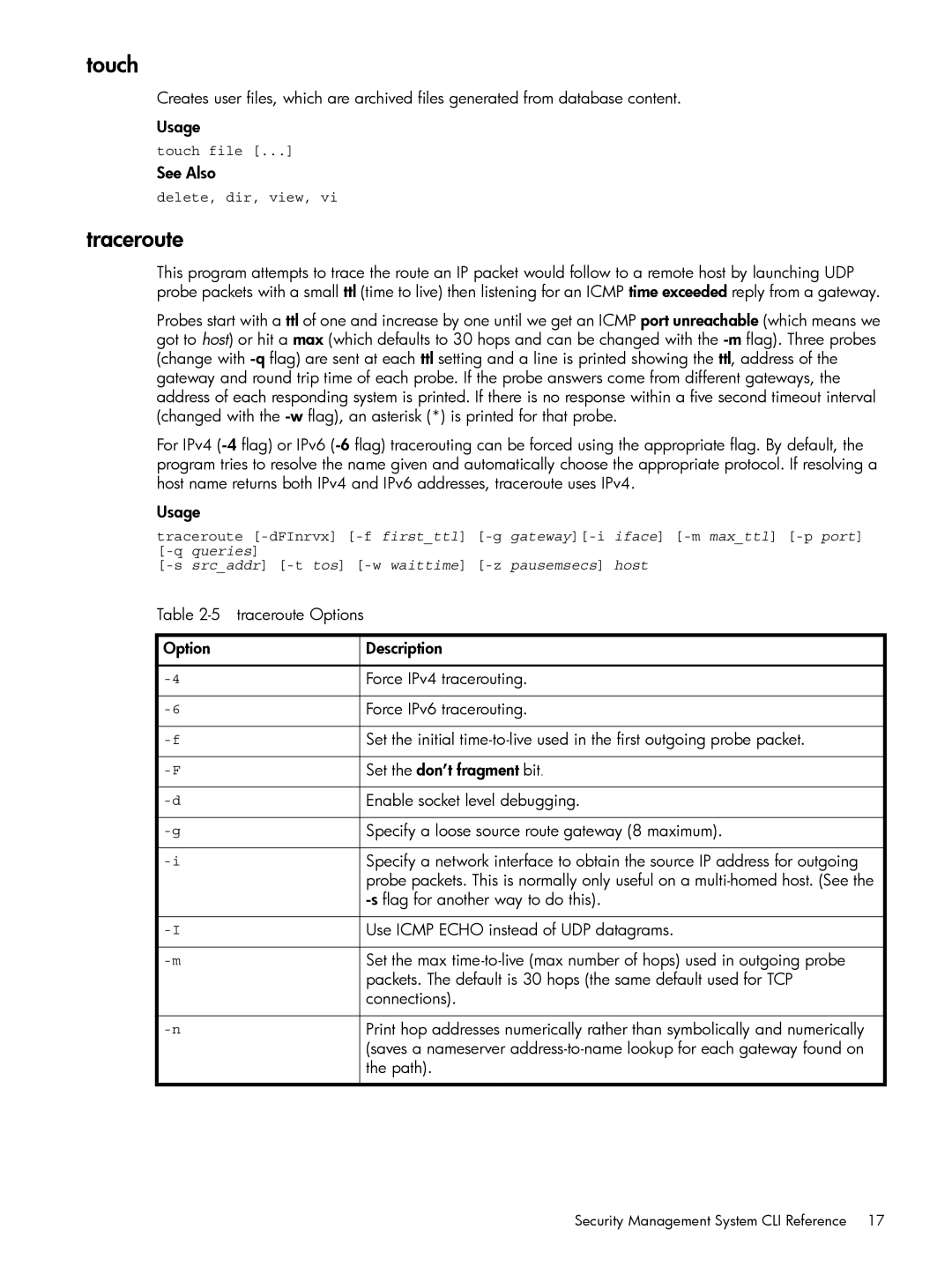touch
Creates user files, which are archived files generated from database content.
Usage
touch file [...]
See Also
delete, dir, view, vi
traceroute
This program attempts to trace the route an IP packet would follow to a remote host by launching UDP probe packets with a small ttl (time to live) then listening for an ICMP time exceeded reply from a gateway.
Probes start with a ttl of one and increase by one until we get an ICMP port unreachable (which means we got to host) or hit a max (which defaults to 30 hops and can be changed with the
For IPv4
Usage
traceroute
Option | Description |
|
|
Force IPv4 tracerouting. | |
|
|
Force IPv6 tracerouting. | |
|
|
Set the initial | |
|
|
Set the don’t fragment bit. | |
|
|
Enable socket level debugging. | |
|
|
Specify a loose source route gateway (8 maximum). | |
|
|
Specify a network interface to obtain the source IP address for outgoing | |
| probe packets. This is normally only useful on a |
| |
|
|
Use ICMP ECHO instead of UDP datagrams. | |
|
|
Set the max | |
| packets. The default is 30 hops (the same default used for TCP |
| connections). |
|
|
Print hop addresses numerically rather than symbolically and numerically | |
| (saves a nameserver |
| the path). |
|
|
Security Management System CLI Reference 17
